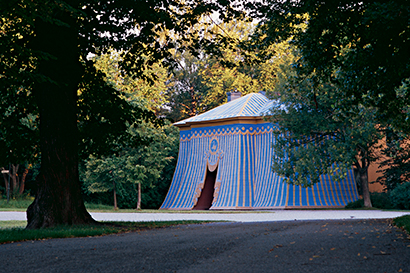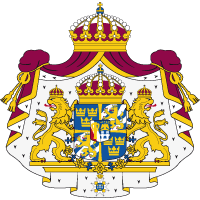Haga Park Museum
The Copper Tents houses Haga Park Museum and a café.
The Copper Tents are close to Gustav III's Pavilion, surrounded by a large meadow that slopes down towards the water.
Haga Park Museum is closed until further notice.
Haga Park Museum
The middle tent is home to Haga Park Museum, which describes Haga's history, people and buildings. The permanent exhibition also shows the development of the park. You can find out fascinating facts about people with links to Haga over the years, including King Gustav III and Carl Michael Bellman.
Café
One of the tents also has a café serving pastries, cakes, buns, sandwiches, coffee, tea and cold drinks.
For details of opening times and menus, see the café's website External link, opens in new window. (in Swedish only).
External link, opens in new window. (in Swedish only).
The Royal Gift Shop
Items from the Royal Gift Shop will be on sale in Gustav III's Pavilion.
A wider range of products is available at the Royal Palace of Stockholm Opens in new window., Drottningholm Palace
Opens in new window., Drottningholm Palace Opens in new window. and Gripsholm Castle
Opens in new window. and Gripsholm Castle Opens in new window..
Opens in new window..

The Copper Tents are home to Haga Park Museum. Photo: Royalpalaces.se










%20symbol.jpg)